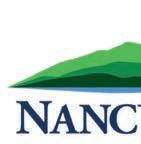Students start selling school produce this July



Students start selling school produce this July


LIBERTY DARR STAFF WRITER
A recent proposal by the O’Brien Brothers development company has caused a familiar uproar in Shelburne in recent months, with many neighbors voicing concern over what the potential development could do to the town’s wastewater and sewer capacity, school capacity and overall look of the town.
The selectboard has been negotiating with the development company for the last month to draft an agreement to insulate the town from certain aspects of such large-scale development.
The agreement, which is not yet signed, is set to be unveiled at a selectboard meeting later this month, selectboard chair Mike Ashooh said.
“I think we are basically done with our discussions with the O’Briens and have reached a point where it looks like we’ve got what we need to make a decision,” he said, noting that the board plans to continue public engagement efforts with a potential question-
See O’BRIEN PROPOSAL on page 12
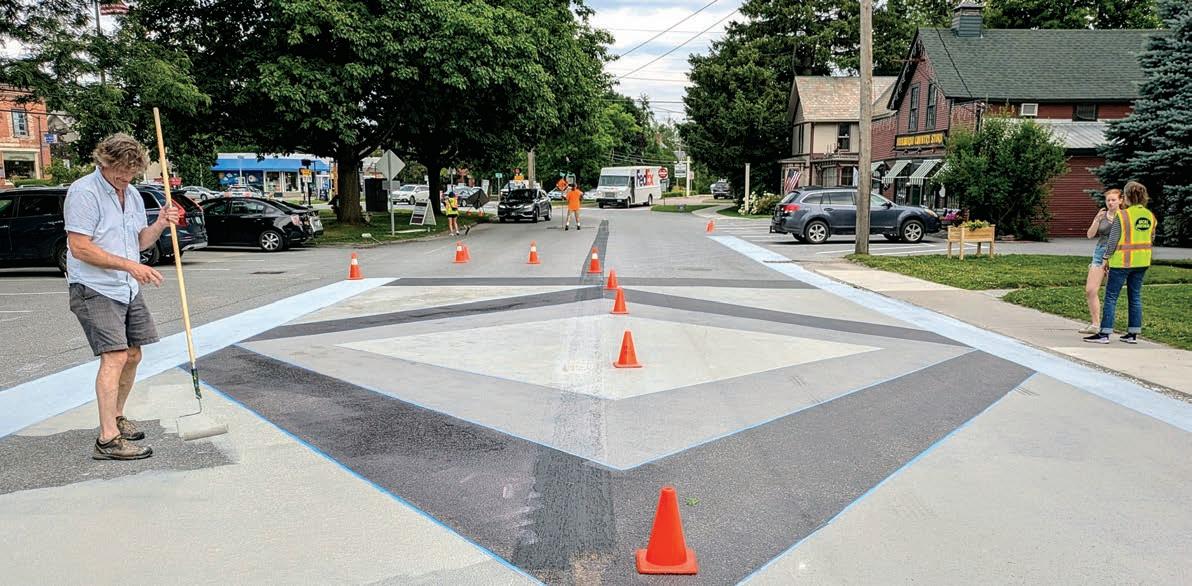
Volunteers with the Falls Road Working Group set up a traffic calming demonstration on Falls Road last week to make the road safer, slow traffic and be more bike and pedestrian friendly. The project, which will be in place until September, features new and improved crosswalks, walking lanes, street art, speed cushions, slow street signs, bike parking and more.
LIBERTY DARR STAFF WRITER
What does the future of farming in Vermont look like?
For a group of four prominent farmers in South Burlington and Shelburne — Bread and Butter Farm, Killeen Crossroads Farm, Blank Page Café and Chrysalis Landworks — a future might only be possible by working together.
Through a new nonprofit known as The Agrihood Collec-
tive, these farmers are exploring solutions to the ever-growing challenges of working in agriculture and are collaborating on an innovative land-ownership model in partnership with the Vermont Land Trust.
And now, plans are coming to fruition as the group moves through fundraising to purchase nearly 360 acres of land in South Burlington to support its agricultural dreams to build a comprehensive shared-farm infrastructure.
There is no surprise that the nature of farming is shifting. In addition to the daily, labor-intensive work — most work from sunup to sundown — farmers must also adapt to a changing climate and unpredictable weather events, increasing infrastructure costs and a housing crisis that leaves many workers earning low wages without a place to live.
“We understand that there are absolutely critical issues that we are currently facing in our farm-

ing community,” Brie Gelinas, co-director of the new nonprofit, said. “We’re talking about the foundation of what Vermont is. Vermont is not Vermont without farms, and even though there’s a lot of land and there’s a lot of abundance, what’s happening is that land is becoming increasingly unaffordable to a farmer. There’s also a challenge with affordable
See FARMING on page 11
Rare and Vintage Bottles from Our Cellar Unique Pours • Food Specials Celebrate Vermont Brewers Festival with Us!


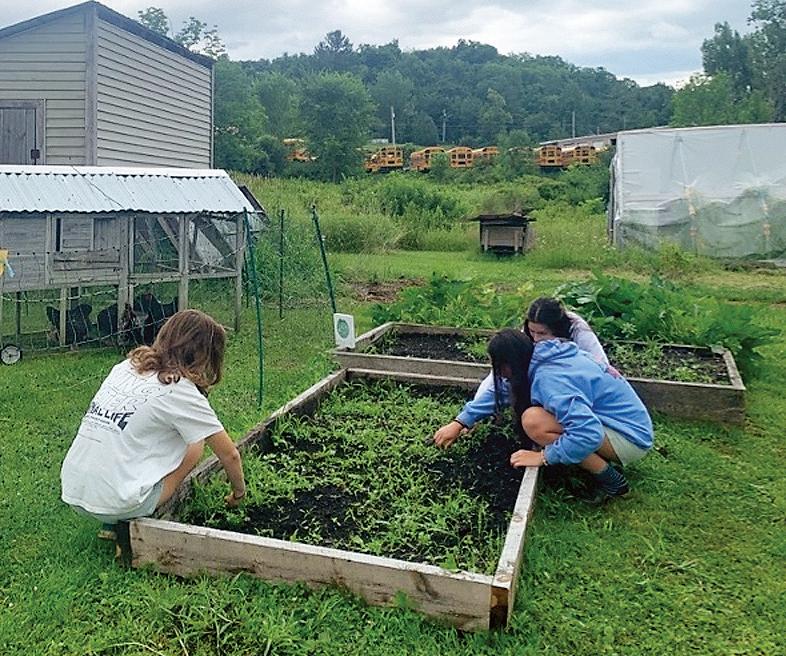

CAMRYN BRAUNS COMMUNITY NEWS SERVICE
Concerned about climate change and quality of life in Vermont, a group of Champlain Valley Union High School student volunteers have opened a farmstand to sell food grown at the school.
“We’re trying to start small and tackle this issue,” Amelia Oppenheimer, a junior at the school involved in the effort, said. “It’s hard to see the world destructing and not take action.”
Spearheading the latest part of the farm-to-school program are Oppenheimer and classmates Olivia Stewart, Yvonne Miceler and Zoe Norris. The four students have been volunteering with the school’s farm and sustainability programs since they were freshmen but only this year began thinking about creating a farmstand to complement their work.
The students and supporters see a chance to bring people closer to their local food system — and
narrow their focus on changes to the environment.
“There’s a lot of awareness, but we need action,” said Gerald Posner, owner of Swaying Daisies Honeybee Farm in Ferrisburgh and volunteer through the school’s sustainability hub.
Students were meeting on campus several mornings a week with Posner and natural resources teacher Dave Trevithick to prepare for the farmstand’s debut at the school on July 8. They’ve been working to maintain the school’s farm in the run-up, harvesting fresh produce, tending to the animals, improving advertisement of the farmstand and doing office work.
During the school year, the volunteers harvest fresh produce from the farm to supply the cafeteria with daily meals for students and families who are food insecure. The system continues through the summer, and any unused produce will now be sold through the farmstand.
“We want to do our part in
trying to keep Vermont sustainable,” said Miceler.
Trevithick, a sixth-generation Vermonter, has seen many environmental changes to the Champlain Valley area over his 20-year teaching career at the high school, such as local farms going away and hunting declining. He’s noticed a widening disconnect between consumers and their food sources, something he attributed to an influx of out-of-state students.
from, you have a better understanding of how people are living their lives.”
Educational awareness of sustainability is important for getting people to care about combating climate change, Trevithick and Posner both said.
“We want to do our part in trying to keep Vermont sustainable.”
— Yvonne Miceler
“We know the numberone thing stopping action in climate change are cultural reasons,” Posner said.
“I think the farmstand is connecting other students and parents to the food that we are growing here,” Trevithick said.
“When you are connecting food to community, you are creating a network for people to have a better understanding of where their resources are coming from. When you have a better understanding of where your resources are coming
“Scientists have been very poor communicators, and we’ve only learned how to write technically and haven’t been able to communicate with the general public.”
As a farmer, Posner said he knows the value of good communication for selling his products.
“You have to be able to communicate well for people to know about it,” he said. “Your product has to look good, and it has to have a
great story. I think here, they have some great components.”
One component of the farmstand project volunteers especially like is how it builds community.
“There are clubs that are big and may be difficult to connect in, or just social spaces, and I feel like we have a small community but a strong one,” said Stewart.
Miceler adds, “I think that’s huge because what makes it important to me is that everyone genuinely feels like friends. It’s a way to break out of your classes and come to the greenhouse and have a communal experience.”
That is something the volunteers agree they wouldn’t typically receive in a traditional classroom setting.
“It’s a great opportunity, and the fact that not everyone knows about this and that they can do it is horrible. That’s why we’re trying to expand and build awareness,” Oppenheimer said.
See FARMSTAND on page 3








In June, three Vermont Day School students traveled to the Henry Ford Museum of American Innovation in Dearborn, Mich. for the U.S. National Invention Convention.
Shannon Capps (first grade), Whitaker Newton (third grade) and Theo Gonyaw (fifth grade) were each top finishers at the Vermont Invention Fair last February.
At the national fair, each inventor showcased their invention to the public and presented their idea to a team of judges. The inventions included a book puller offer by Capps, hello ring by Newton and backyard farmer and egg collector by Gonyaw.
All three participated in the school’s Invention Club where they identified a real-world problem, conducted research, developed protypes, tested and refined ideas and practiced presentation skills.
Taking part in the invention process was an invaluable learning opportunity noted parent Amy Gonyaw.
“My child learned there’s a lot of trial and error in coming up with an idea that’s worth developing. He learned that there are inventions to be made around him, he just needs to keep looking for them,” she said. “Approaching life with a creative, problem-solving mindset will serve him well no matter what he chooses to do.”
The next Vermont Invention Fair will take place in February 2025 at Vermont Day School in Shelburne. The Vermont Fair is open to all K-8 students in
FARMSTAND
continued from page 2
Having the farmstand, Posner said, will help attract other people with the same mindset.
Sustainability hub members are already considering a plan for the upcoming school year. Many of the current volunteers play fall sports and will have to juggle activities and schoolwork with the farm.
Trevithick said his natural resources class will visit the farm, along with other sustainability-based clubs, and Posner plans to bring in more volunteers. The team worries about frozen water and heat sources for the greenhouse as cold weather approaches, but they are determined to keep the farm functioning.
“We have to find a way to make it work,” Posner said. “Failure is not an option.”

of American Innovation for the U.S. National Invention Convention.
Vermont and is made possible through the school’s partner
ship with the Young Inventors’ Program at the University of New
Hampshire’s Leitzel Center.
Interested participants should visit vtdayschool.org for registration information.






Bring
Always keep the needs of St. George and Shelburne's constituents first
Total reported incidents: 171
Traffic stops: 20
Warnings: 19
Tickets: 1
Arrests: 5
Medical emergencies: 52
Mental health incidents: 3
Suspicious incidents: 18
Directed patrols: 7
Citizen assists: 17
Motor vehicle complaints: 6
Car crash: 10
Animal problem: 4
Theft: 11
Vandalism: 1
Fraud: 1
Alarms: 17
Pending investigations: 15
911 Hang-up calls: 2
July 1 at 6 p.m., a caller reported finding a rattlesnake on South Pasture Road. Officers located the snake and determined it was not a rattlesnake.
July 1 at 10:21 p.m., a caller reported individuals fighting on Brentwood Drive. Shelburne Rescue and UVM Rescue were dispatched. The individuals were transported to the hospital and the case is pending investigation.
July 2 at 10:15 a.m., a theft was reported at Jiffy Mart. Officers checked the area but were unable to locate the individual.
July 2 at 10:42 a.m., a caller reported he was assaulted while jogging on Locust Hill. The victim was located, provided a statement, and refused trans-
port to the hospital. Tamra Headrick-Bell, 43, no address provided, was issued an arrest citation for simple assault.
July 2 at 4:38 p.m., a caller reported a theft from their motor vehicle on Shelburne Road.
July 3 at 6:24 p.m., a caller reported a rude customer at Kinney Drugs. The individual was issued a trespass notice.
July 3 at 8:20 p.m., a caller reported a theft from their residence on Shelburne Road.
July 3 at 10:59 p.m., the caller reported horses in the roadway on Spear Street. The animals were located and removed from the roadway.
July 5 at 12:11 p.m., a caller reported a theft from their motor vehicle on Meadow Lane.
July 5 at 6:10 p.m., a caller reported a theft of items from their motor vehicle on Butternut Lane. The property was later recovered in Burlington.
July 6 at 6:37 a.m., a caller reported power lines down on Bacon Drive and John Street. Shelburne fire, rescue and police responded, and the power company removed the lines from the road.
July 8 at 8:21 a.m., a caller reported that their residence or vehicle was vandalized on Harrington Avenue.
July 8 at 11:28 a.m., a caller
See BLOTTER on page 11
Serving the community of Shelburne A publication of Vermont Community Newspaper Group LLC shelburnenews.com
Advertising Wendy Ewing wendy@shelburnenews.com (802) 985-3091 x12
Advertising Director Judy Kearns judy@otherpapersbvt.com (802) 864-6670 x21
News Editor Tommy Gardner
Staff Writers
Aaron Calvin Liberty Darr
Production Manager Stephanie Manning stephanie@shelburnenews.com
Editor/Publisher Gregory Popa gpopa@stowereporter.com

Billing inquiries Leslie Lafountain leslie@stowereporter.com (802) 253-2101
Advertising submission deadline: Friday at 5 p.m. advertising@shelburnenews.com classifieds@shelburnenews.com
Editorial submission deadline: Friday at 5 p.m. news@shelburnenews.com
Calendar submission deadline: Friday at 12 p.m. news@shelburnenews.com
Contact: 1340 Williston Road South Burlington, VT 05403 (802) 985-3091
The Pierson Library is at 5376 Shelburne Road in Shelburne. For more information call 802-985-5124. For the complete event calendar, goto piersonlibrary.org. The hours are Monday, Wednesday, Friday and Saturday, 10 a.m.-5 p.m., and Tuesday and Thursday, 10 a.m.-7 p.m.
Very Merry Theatre performs ‘Robin Hood’
Prepare to be wowed by an energetic musical performance of “Robin Hood and Maid Marian” by Vermont’s Very Merry Theatre on Friday, July 19, at 1:30 p.m. in town hall as part of the Pierson Library’s summer reading program.
The show features a cast of local youth actors and is appropriate for all ages. No registration required.
Circus Smirkus training camp
Run away and join the circus with the Pierson Library and Circus Smirkus. Smirkus performers will visit the library to teach students how to juggle, spin plates and perform a myriad of other circus skills for two sessions on Saturday, July 20.
The first is suited to students
in first and second grade, and the afternoon session suits third grade and up. To register, call 802-9855124.
Author Sara B. Franklin visits town hall
Sara B. Franklin will be in town hall on Tuesday, July 23, from 7-8 p.m. in conversation about her new book, “The Editor,” which focuses on the life and work of legendary editor Judith B. Jones, the luminary behind some of the most important authors of the 20th century, including Anne Frank, Julia Child, John Updike and Sylvia Plath. Copies of the book will be for sale at the event.
New series uses artificial intelligence to create art
Library director Michael Hibben will lead a three-part workshop series unlocking the world of generative AI art beginning Tuesday, July 23, at 6 p.m.
Dive into a realm where creativity meets technology, and learn how to harness the power of artificial intelligence to create original works of art. In this program designed for AI beginners, participants will explore various AI art platforms, create new works of art and learn about the possibilities
and pitfalls of this technology. Bring your curiosity and creativity, along with a laptop or tablet. Please ensure you have a working email address (and its password) as registration may be required for some of the platforms you’ll be exploring.
The other two sessions are on July 30 and Aug. 6, and you don’t need to attend all three sessions.
The third band in the Pierson’s summer concert series is West African Dance and Drum group Jeh Kulu.
Based in Burlington, Jeh Kulu, which is devoted to traditional West African music and dance, will take the town hall stage on Thursday, July 25, from 6-7 p.m. In the Bambara language of Mali, Jeh Kulu means community and that’s just what they offer with traditional rhythms and dances from Guinea, Senegal and Mali.
The remaining acts in this concert series are the bluegrass group, The Cold Creek Pickers (Aug. 2), Franco-American singer-songwriter Michèle Choinière & Band (Aug. 16) and American comedy legends The Hokum Brothers (Aug. 24).
Guest Perspective
Andrew Gill
As someone who has lived in Shelburne since I was 3 years old, attended Shelburne Community School and worked on the grounds crew at Shelburne Farms through high school and college, I have a deep connection to this community. My wife and I bought our first home here in 2011, where we are raising two young children, adjacent to the proposed O’Brien project.
My parents still live in Shelburne, and now three generations of our family enjoy fall soccer Saturdays on the same fields I played on as a child. I am committed to this community and have dedicated my career to welcoming others into new housing opportunities in Vermont.
For the past 11 years, I have worked at O’Brien Brothers, a local, multi-generational, family-owned business that has been a successful and respected member of the Vermont business community for nearly seven decades. We have a long history of creating affordable and market-rate housing in Vermont, always operating under the ethos of building and maintaining properties we would be proud to live in. Our small company of about 20 employees is dedicated to helping people find homes they love, where they can experience the wonderful sense of community that comes with living
in this special corner of Vermont.
Recently, our proposed housing project in Shelburne has sparked some public discussion, and unfortunately, some have questioned the integrity of O’Brien Brothers as a development company. Let’s set the record straight. Community members, public servants and regulatory authorities in the towns we work in will tell you the same thing: O’Brien Brothers lives up to its commitments. With this understanding, I hope we can table the distrust and focus on the facts and the immense opportunity this project can bring to Shelburne.
First, concerns have been raised about the environmental and natural resource impacts of the project. These are critically important questions and concerns that we welcome. All development projects shift land from its natural state to a built environment. As populations grow, communities face the challenge of how to best protect natural resources while grappling with the reality that more housing is needed.
The O’Brien Brothers’ proposed plan is a short walk from the village, school and community centers and continues a logical development pattern in the core part of the town. Further, the plan conserves over 60 percent of the involved land forever, avoids forest blocks and wildlife corridors and will create
Guest Perspective
Ben Kinsley
Don Tinney’s hit piece on Gov. Phil Scott is nothing new for the VT-NEA, although I’m surprised by the shrillness of his tone. Perhaps he realizes how much Vermonters have lost patience with rising property taxes and declining outcomes and is hoping to deflect attention away from his organization. (“Political courage, not popularity, will build a stronger Vermont,” July 11, 2024)
The basic facts are that we have more adults per student
public walking paths, sidewalks, recreation paths and trails, increasing non-vehicular connectivity.
Second, concerns have been raised about the affordability of houses in the project. The only way to reduce home prices and mitigate Vermont’s housing crisis is to add inventory to the market and enable older housing stock to become available as buyers move up into newer homes. The town of Shelburne is already engaged in and achieving significant amounts of subsidized housing, as seen in the new Bay Ridge project. However, there is limited funding for such projects, and those funds are utilized in full every year on a competitive basis and spread across the state.
In addition to subsidized projects, market-based options must also be part of a holistic solution to the housing crisis. The O’Brien Brothers project will deliver a range of housing options across a wide range of price points, including perpetually affordable housing that will offer both low-income and workforce housing sale price limitations.
Third, healthy debate is key to a community’s growth, especially regarding the Shelburne development. But let’s avoid misinfor-
mation. New housing stock will increase the grand list and reduce individual tax burdens. The claim that the O’Brien Brothers project will flood schools with 400-plusnew students is false.
All you have to do is look at the average household size in Shelburne, Chittenden County or the state to quickly disprove that hyperbole. That said, school enrollment is on the decline, and we need young families to maintain our schools. Families with children are a good thing for Shelburne and for the state, and a necessity for a viable future.
The plan is to build up to 350 units over the next decade, not 500, and we have been consistent on that fact. Similarly, the proposal does not involve any four- or five-story buildings. We are fine having a healthy debate on the merits of the project, but let’s stick to the truth, not fearmongering using hyperbole, distortion of facts or outright misstatements.
Finally, there have been concerns about the scale and density of the new construction. To minimize environmental impacts and promote affordability, we must be as efficient as possible in our approach to land use. To promote conservation and affordability but balk at the
aesthetic of a more densely populated community is contradictory. The alternative is sprawl, land fragmentation, exclusivity and ever-higher and more out-of-reach price points.
Instead, we are focused on building a neighborhood that uses the land efficiently, adds bike and pedestrian connectivity to the village, conserves a large and contiguous area of ecological significance and offers a variety of living opportunities to community members of varying stages of life and socioeconomic circumstances. The result is smart growth, and how, as a homebuilder and a community, we can help move Shelburne forward together (pun intended).
As we proceed through this process, I hope all involved can be receptive to change and optimistic about the opportunity to welcome new community members to live in this wonderful community that we all care so much about. Let us not lose sight of the people and their future stories that each new home holds and consider those facts when weighing the merits of this proposal.
Andrew Gill is director of development for O’Brien Brothers.
in our schools than any state in the country — and it’s not even close — resulting in the second highest cost per student. Over the past decades, we have seen steady spending increases, driven by staffing levels that have persisted despite Act 46. Further, and more alarming, test scores have declined compared to other states that spend less and have larger at-risk student populations.
We can see from the National Center for Education Statistics data that in the early 2000s we


continued from page 5
were spending below our peers in New England but achieving better results. By 2015, their eighth-grade math outcomes had surpassed ours despite our spending growing at nearly twice the rate — 61 percent versus 37 percent. Test scores have been trending downward across the board over the past decade, however Vermont’s scores are declining much faster than the nation at 5.9 percent compared to 3.4 percent.
This trend is similar when looking at other disciplines and grade levels and the trend is continuing despite a sharp increase in spending since the 2018-2019 school year. Today, we are spending nearly 79 percent more than the national average but getting only marginally better results.
To be fair, Scott has offered few actionable policy suggestions to address this problem and the most coherent one was offered by the tax commissioner at the 11th hour of the legislative process. Tinney rightly criticizes the plan to borrow against reserves, which would simply create a larger


in the way of meaningful reform. Tinney points to an income tax as the solution to our woes but the reality is that two-thirds of Vermonters pay based on their income today. Replacing the third of taxpayers that pay based on the actual value of their homes would increase the volatility of education tax revenues (home values are more stable than incomes particularly for higher income households) and further exacerbate the property tax rollercoaster. It is also concerning that he casts fiscal restraint as a partisan issue and attempts to tie Scott to Trump because he refuses to raise taxes. Vermonters know better than that.

However, the VTNEA and its friends in other education special interest groups have also offered little in the way of meaningful reform. Tinney points to an income tax
as the solution to our woes but the reality is that twothirds of Vermonters pay based on their income today.
In fact, Sen. Jane Kitchell (D-Caledonia), who Tinney himself praises in his opening paragraphs, is known for steadily steering the ship of fiscal responsibility in the Senate. She even, as reported by VTDigger, opposed the Universal School Meals proposal in 2013 pushed by Tinney and his allies, which is now contributing to the current property tax crisis. Tinney was right about one thing though. Vermonters have made it abundantly clear that they
think the education funding system is broken. The problem is that the current system is so opaque it is not clear if increased taxes are the result of local spending, unfunded mandates or legislative taxing decisions.
That lack of transparency means that no one is held accountable and spending and property taxes both continue to increase unchecked year after year. The Commission on the Future of Education that the Legislature went all-in on this session is made of up lobbyists for superintendents, principals, teachers and other special interests who helped to design the current system. I am not optimistic they will produce a different outcome this time around.
Ben Kinsley has over a decade of public policy experience in Vermont. Working for nonprofit organizations, he has worked on public policy in education, elections and ethics. He currently serves on the board of directors for Campaign for Vermont, a non-partisan advocacy group seeking to grow the state’s middle class. KINSLEY
KEVIN O’CONNOR CONTRIBUTOR
When John McDermott was ordained as a priest 35 years ago, both the new cleric and the nearly two-century-old Vermont Roman Catholic Diocese — the state’s largest religious denomination — were awash in historic highs.
Standing before then-Bishop John Marshall at Burlington’s Cathedral of the Immaculate Conception in 1989, McDermott was happy to join a faith with some 150,000 members, 130 parishes and nearly 200 fellow priests.
McDermott went on to rise through the ranks, moving from small-town pastorships to the diocesan post of second-in-command. In contrast, the statewide church has faced a series of declines, with its website reporting nearly one-third fewer members, half as many parishes and only 36 active priests.
McDermott is now set to become Vermont’s new Catholic bishop.
1990s about past child abuse at Burlington’s now-closed St. Joseph’s Orphanage, followed by headlines in the 2000s about decades of clergy sexual misconduct against altar boys statewide.
“If I was to go down to the Statehouse,” recently departed Bishop Christopher Coyne went on to say in 2019, “the first thing that someone would come out with is, ‘You have no rights to lecture us about moral law given what the church did to children.’”
The Vermont diocese has paid out more than $30 million in legal settlements, in part by selling such assets as its former 32-acre Burlington headquarters along Lake Champlain. Even so, cases keep coming with the passage of state laws in 2019 and 2021 repealing deadlines on civil claims.
“More parish and church mergers and consolidations will have to be considered.”
— John McDermott
The 61-year-old’s installation took place Monday for Burlington’s Saint Joseph Cathedral — the diocese’s current mother church after the closure of the Immaculate Conception sanctuary where he first took vows.
The change of venue is just one reminder of the litany of challenges the new leader faces.
When the New Jersey-born McDermott left the U.S. Coast Guard Academy to become a priest (after discovering he was prone to seasickness), the diocese could boast that one of every four Vermonters was Catholic. With such sway, former bishops regularly rallied the faithful to Montpelier to oppose such measures as abortion.
Ralph Wright — the longest-serving Vermont House speaker, from 1985 to 1994 — recalled a church protest against his 1992 call for LGBTQ rights in his book “Inside the Statehouse.”
“The crowd, which had been bused in from the four corners of the state, numbered over a thousand,” the Bennington Democrat wrote. “Amid prayers for the souls of sinners could be heard the distant chant, ‘Wright is wrong; Wright is wrong; Wright is wrong.’”
Then came reporting in the

“I’ve been dealing with the abuse crisis for now almost 20 years,” McDermott told reporters at a recent press conference. “Seeking just resolutions for those who have been hurt, I think we have an obligation to help them. It’s just a question of how much we can afford to help them.”
Catholics also are wrestling with decreasing numbers of priests and parishioners. McDermott first entered the public spotlight 20 years ago when the diocese, reaching a tipping point of more churches than clergy, charged him with leading its first parish consolidation effort.
“My hope would be people focus on the fact that while church buildings are important, our faith doesn’t depend upon them,” McDermott told reporters in 2004. “To me this shouldn’t be a time of great fear and despair, but of possibility and spiritual growth.”
Since then, the number of active priests has dropped from about 100 to 36 — a figure lower than that under the first Vermont Catholic bishop, Louis deGoesbriand, who founded the state diocese in 1853. That has forced current leadership to close or consolidate nearly half of its parishes, from 130 two decades ago to 68 today. Such cutbacks are set to continue.
Through a combination of demonstrations, vignettes, narrated boat cruises and battle reenactments, visitors will experience the British advance for Lake George as Fort Ticonderoga presents the 1759 Siege of Carillon two-day battle reenactment Saturday and Sunday, July 20-21.
Become immersed in this 18th-century siege featuring the constant roar of cannon, battle reenactments and even a nighttime program where visitors are immersed in the battle for Carillon, named Ticonderoga by the British once they captured the fort from the French.
The reenactment will take place all weekend and is included as part of daily admission.
The weekend starts Saturday with “The Calm Before the Storm” as visitors step into Fort Carillon on July 23, 1759, and discover how the French to block British invasion on Lake Champlain.
Visitors will discover Gen. Jeffrey Amherst’s plan to prevent the mistakes of 1758 as he advanced toward Ticonderoga with his 11,000-man army of British and American provincial soldiers. Watch as British regulars, American provincials, rangers and Native American warriors push from Lake George to capture the Heights of Carillon. See how French soldiers traded ground for time, as they carefully stalled the British advance in preparation to defend Fort Carillon.
Later that day, during an
evening program, the twilight will be ablaze with gunfire as visitors experience the 1759 Siege of Carillon based on original eyewitness accounts on both sides of the lines.
See the British and American provincial soldiers continue to dig their cannon batteries and guard their position even as mortar bombs fall along with the darkness.
On Sunday, Explore the last hours of Fort Carillon, as the French prepared to evacuate, even
as they continued to fire at the encircling in “The Aftermath.” French soldiers sortie out from Fort Carillon one last time to disrupt British progress on their entrenchments and cannon batteries. After initially faltering from the surprise, British and American provincial soldiers regain their position, and the work of the siege continues. Get the rare sight of the French evacuating by bateau on Lake Champlain.
Advance tickets are encouraged at fortticonderoga.org.


Shelburne Church hosts July 23 blood drive
Give the gift of blood at the Shelburne community blood drive sponsored by St. Catherine of Siena Parish on Tuesday, July 23, from noon-5 p.m., 72 Church St., Shelburne.
Appointments are strongly recommended as walk-ins cannot always be accommodated. To give, call 800-733-2767 or visit redcrossblood.org and enter Shelburne to schedule an appointment.
If you are an eligible type O, B - or A - donor, consider making a Power Red donation. Red blood cells are the most transfused blood component.
Streamline your donation and save up to 15 minutes by visiting the website and completing a health history questionnaire.
Hospital board hosts community conversation
The Vermont Green Mountain Care Board hosts a discussion on the future of health care in Vermont on Monday, July 29, 4:30-6 p.m., at the South Burlington Public Library.
Despite rising insurance costs, Vermont’s hospitals and health systems face financial pressures
Learn more at gmcboard. vermont.gov/act-167-community-meetings.
lecturer talks abortion, substance use
The Ethan Allen Homestead Museum offers a look back at the history of the health of Vermonters in the 19th century with the talk, “Substance Abuse and Abortion: Surviving Health Challenges in 19th Century Vermont” by Gary Shattuck, on Sunday, July 21, 2 p.m.
The presentation will discuss two of the most difficult challenges people faced during this time, substance abuse and abortion, demonstrating that “the more things change, the more they stay the same.”
Admission is free.
Shelburne hosts summer concert series at farm barn
Set up your lawn chair and blanket and bring a picnic dinner or enjoy food on site at Shelburne Farms annual concert series at the Farm Barn.
Kids love dancing on the lawn and visiting the animals in the farmyard. For safety, all children must

Bands play from 6:30-8 p.m. Sorry, no dogs.
The series finale concert starts at 7 p.m., with food trucks and picnicking from 5 p.m. (Rain date is July 31.)
programs at the Charlotte Senior Center
For more information about any of the programming, go to charlotteseniorcentervt.org.
imagery, while Woodruff is a children’s book illustrator and artist.
• Women’s kayak trip, Friday, July 28. Registration is required for this free program with trip leaders Mary Silverman and Dorothy Pumo. The tentative location is the mouth of the Winooski. These trips are for active women who share a love of exploring local lakes, ponds and rivers. Trips listed are tentative, dependent on water and weather conditions. To receive trip information, email Susan Hyde at susanfosterhyde@gmail.com.

• Walking and gentle hiking group, Thursday, July 25. Free but registration appreciated. Walk at a gentle pace with other seniors. The group will meet each month for a congenial non-strenuous walk.
Meet at 9 a.m. in the parking lot at Charlotte Senior Center. Questions? Contact Penny Burman at 916-753-7279.
“On the Rocks” with Ginny Joyner, Saturday, July 27, 10 a.m.-12:30 p.m. If you’ve always wanted to try watercolor but were too intimidated, this is the class for you. The cost is $40 plus a $6 supply fee. Registration and payment required by July 24. Shape-note singing, Sunday, July 28, 12:30-2:30 p.m. Free. Traditional a capella, four-part harmony sung for the joy of singing not as a practice for performance. The first hour will be sacred harp singing and the second from an

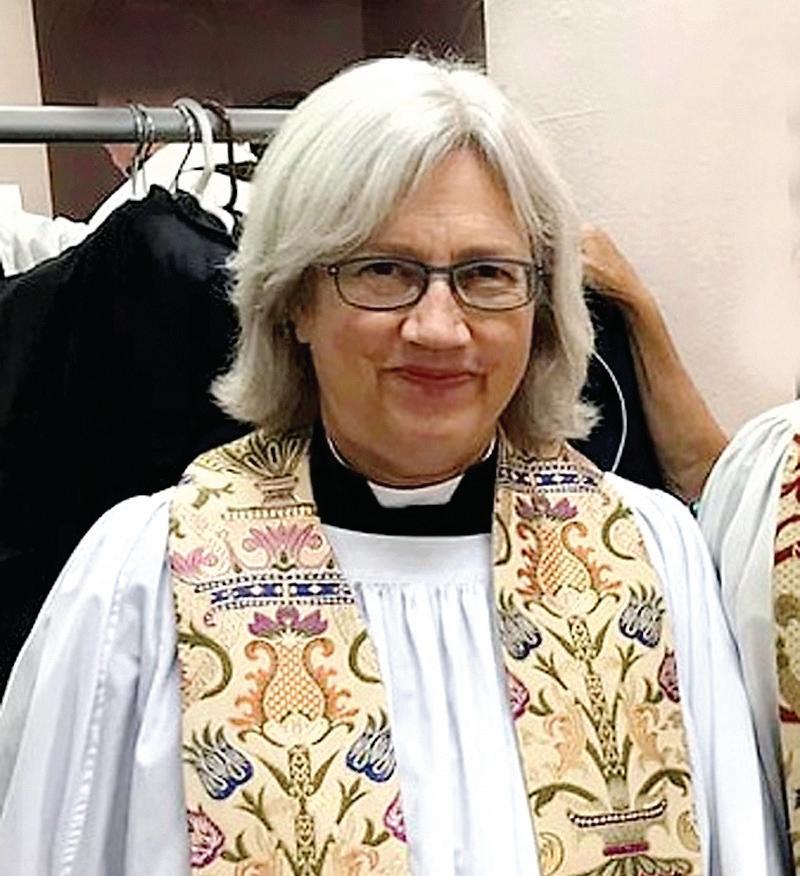
Rev. Dr. Anne Hartley has joined All Saints Episcopal Church as its new priest in charge.
Hartley comes from St. Thomas Episcopal Church in St. Petersburg, Fla., where she’s been responsible for celebrating Eucharist each week, and assisting with youth ministry, pastoral care and other outreach initiatives.
She holds a doctorate in biogeochemistry and was an assistant professor in terrestri-
continued from page 8
alternate shape notebook. Books provided. To schedule your introduction to shape notes and scales, contact Kerry Cullinan at kclynxvt@gmail.com.
Enjoy a picnic before the Vermont Symphony Orchestra and Skylark perform at the Charlotte Town Beach for Music at the Beach on Wednesday, July 24, 5 p.m.
The music starts at 6 p.m. and it’s free with a season beach or a paid day pass.
In the event of rain, the concert will move to the Charlotte Senior Center. Questions? Email billandeva@gmavt.net.
The family of Robert A. Nappi is holding a celebration of his life on Saturday, July 20, 2024, at 2 p.m. at the Shelburne United Methodist Church to mark his death and to celebrate a life well lived.
Nathalie E. Lovett, of Shelburne, was reunited with her beloved husband Bill, on Wednesday, July 3, 2024, one day shy of her 97th birthday.
Nathalie was predeceased by her husband, William “Bill” Lovett, in March 2022.
She is survived by her six children, Madonna Repeta of Bedford, N.H., Mark Lovett of Jackson, Wyo., Melissa Grasz of Hull, Mass., Jude Melen of Shelburne and Pamela Lovett and Valerie Lovett, both of South Burlington.
continued from page 7
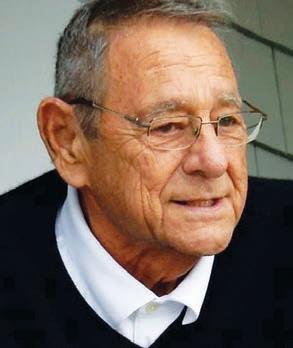
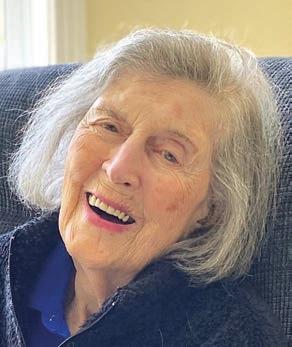
She is also survived by 10 grandchildren and six great grandchildren.
There will be no calling hours.
A Catholic Mass celebrating Nathalie’s life and faith will be held on Friday Aug. 16, 2024, at St. Catherine of Siena Church in Shelburne at 2 p.m
In lieu of flowers, please consider donating to the Alzheimer’s Association as in the end this disease is what took Nathalie from her family.
For full obituary visit gregorycremation.com.
al ecosystem ecology at Florida Gulf Coast University. Following her tenure there, she completed a Master of Divinity degree from General Seminary in New York City. She was ordained to the Episcopal priesthood in August 2022.
Hartley starts at All Saints on Aug. 1. She will also serve St. Paul’s Episcopal Church in Vergennes. She lives in South Burlington.
“The reality is that many churches were built at a time when transportation and travel was more difficult,” McDermott told VTDigger this month. “Now we know people can more easily travel and will do so for those things that are important to them. More parish and church mergers and consolidations will have to be considered.”
Maintaining any religious denomination is difficult in Vermont, as the state has the lowest share of adults in the nation who attend any type of service — 21 percent, according to a recent Pew Research Center survey.
With fewer clergy, McDermott
will rely more on deacons and laypeople to run the diocese.
“I have been the only full-time priest working at the chancery for the last 10 years,” he is quoted in the current issue of Vermont Catholic magazine. “My hope is to provide a strong vision and direction and then let people get to work.”
As a diocesan administrator, McDermott has traveled to all but two of Vermont’s Catholic churches (the outliers are Stratton and Townshend). He’ll start his tenure as the state’s 11th Catholic bishop with plans to visit the last pair. As for questions about how to draw more priests and parishioners, he
has no easy answers.
“One of the dangers we face is trying to solve the issue of declining church participation and attendance with a new program,” he said. “We always have to make sure we’re not overly concerned just about numbers. I think the big challenge for us is to be authentically who we are as followers of Christ.”
McDermott said he’d start with himself.
“I’m a glass half full type of person,” he concluded. “I tend to be enthusiastic and hopeful and very positive, even in difficult times, and I’m hoping that continues to be.”


Rachel Sargeant Mirus
A long time ago, not so far away, freshwater plants partnered with fungi and moved onto land from lake and river shores. Since that time, land plants have evolved many sophisticated strategies for terrestrial life. Yet to this day, growing in damp forests and on foggy mountainsides, there are plants that embody ancient botanical history.
Liverworts are the closest living analogs to the first plants that arrived on land, almost half a billion years ago. These primitive plants lack structures to control water loss, are very small, and grow mostly in damp habitats. There are two main types: thallose liverworts, which grow as leathery green patches on bare soil and on rocks in streams, and leafy liverworts, many of which superficially resemble mosses.
One example of a leafy liverwort is the rare Hooker’s flapwort (Haplomitrium hookeri). In New England, this species’ only known habitat is on Mt. Washington, where it grows on wet, north-facing rocks in Tuckerman Ravine. It’s a stubby, bright green plant, about a millimeter tall. Jeff Duckett, emeritus professor of botany working at the Natural History Museum, London, has observed Haplomitrium on six continents. “If you have a trained eye, it can immediately be recognized by its distinct bright green color, even though it’s very small,” he said.
Duckett’s research on Hooker’s flapwort has made important contributions to the study of plant evolution. Scientists already recognized that liverworts — like most other land plants — have relationships with Glomeromycotina, a group of mycorrhizal fungi that form branched structures inside the root cells of their host plants. These “gloms” help the plants access phosphorus and nitrogen in the soil in exchange for carbohydrates.
But Duckett and collaborators discovered a relationship between liverworts and a previously overlooked group of fungi that may have played an essential role in plants’ colonization of land.
Like other leafy liverworts, Hooker’s flap-


wort grows as a network of underground axes, or stem-like structures, that put out small, photosynthesizing shoots above the soil.
Looking at these subterranean stems using an electron microscope, Duckett noticed a
We understand the love you have for your pets and the importance they hold in your life. Our compassionate staff is devoted to easing the difficulties at this challenging time.
Our staff is here for you 24/7 Tiger & Buster
• The Island Memorial Difference:
• Pet Funerals • Cremation Services
• Your Pet is Always in Our Care
• Dignified Pet Transportation from Your Home or Vet
• Immediate & Witness Cremation Available
• Full Line of Pet Loss Products

molecular ecologist working at Kew Gardens. Initially Bidartondo was at a loss, reporting back that he couldn’t identify the fungus’s DNA. Eventually, using new techniques, he found that the mystery symbiont belonged to the Mucoromycotina, or “mucs,” an ancient lineage of fungi previously known only as free-living decomposers.
Mucs can form a variety of structures inside their host plant’s cells but have finer hyphae than the gloms. Work by Katie Field at Sheffield University, Silvia Pressel, senior researcher at the Natural History Museum in London, and one of her students, William Rimington, showed that Hooker’s flapwort was indeed gaining phosphorus and nitrogen from the mucs species, and giving carbon in return. Since that discovery, they have found that mucs form symbiotic relationships with numerous other plants, including some crop species, and often coexist with gloms.
These discoveries have prompted many new questions about plant evolution that researchers have yet to answer. How do plants, gloms, and mucs work together to balance each partners’ nutritional needs? Do mucs share unique benefits with their partners, such as access to more nitrogen through their role as decomposers? How did each of these fungal relationships offer plants different advantages as they moved onto land?
These questions are so wide ranging and interconnected that no one person has all the expertise to answer them. “This is why science today is teamwork,” Duckett said. They’re also fun questions to ponder, as you walk through the woods this summer. When you notice green patches on rocks in a stream, or if you spy a patch of stubby plants during a hike in Tuckerman Ravine, pause for a moment. You’re in the presence of ancients, and a venerable, still mysterious partnership that carried life from the water.
symbiotic fungus that he described as an “odd fungus that looked like nothing anyone had seen before.”
Duckett was curious about the fungus, so he teamed up with Martin Bidartondo, a
Rachel Sargent Mirus is a teaching artist and writer. Illustration by Adelaide Murphy Tyrol. The Outside Story is assigned and edited by Northern Woodlands magazine and sponsored by the Wellborn Ecology Fund of the New Hampshire Charitable Foundation, nhcf.org.











continued from page 1
infrastructure, and that’s due to the soaring equipment costs. We also have a challenge with the retention of the workforce, and that’s because there is this housing crisis and, obviously, inflation just exacerbates an already very huge problem.”
The idea of the collective is relatively simple, she said. If farms pool their resources, the rate of survival is inherently higher.
The nonprofit’s founders — whose farms sit within a one-mile radius of each other — collectively provide fresh fruits, vegetables, meat, poultry, eggs and value-added products to over 13,500 customers. They feed more than 450 households weekly with organic produce through community supported agriculture, or CSA, and offer food and land education programs and 150-plus events each year.
The larger vision for the new farm began in 2017 when Bread and Butter Farm, spearheaded by owner Corie Peirce, saw a “for sale sign” posted on the old Auclair Farm almost directly across the street from her farm, which straddles the South Burlington and Shelburne town line just off Cheesefactory Road.
“When we saw the for-sale sign posted on the Auclair Farm, we immediately acted to find a way to protect its place as an open landscape and working farm in our community. We approached the city of South Burlington and received an overwhelmingly positive response to pursue a conservation path for this land,” the farmers wrote in 2018.
The city fronted nearly $605,000 in open space money to help in the conservation of portions of the land with the Vermont Land
Trust, which currently owns the land.
“We’ve partnered with them, we’ve conserved the land, brought the cost of the land down, and now we need to finalize that,” Gelinas, who joined the nonprofit team last year, said. “The final step is to purchase those 360 acres from them.”
Abby White, vice president for engagement at the Vermont Land Trust, said her team has been collaborating with the collective, and has even helped fundraising efforts for Agrihood to eventually purchase the 360 acres.
“If we want to be successful in protecting land, particularly farmland, we have to ensure that the farmers who are working that land are also successful,” she said.
“What’s really exciting about The Agrihood Collective is that it is an innovative way for farmers to come together and figure out how to be economically viable on the land.”
A massive win came when the collective received a recent donation of just under $1 million to purchase a 13-acre stretch of developable land just north of the property from the nonprofit Dirt Capitals Partners.
By the end of the month, the transaction should be signed, sealed and delivered, Gelinas said.
That is where the group envisions a commercial kitchen, freezer refrigeration, shared farming equipment and a possible event space. More important, it is where the collective plans to build housing that’s affordable for its workers.
Of the $750,000 needed to buy the separate 360-acre property, the collective has already raised nearly $435,000. But receiving the $1 million donation for the 13 acres sent a much-needed message



of support to the team.
“Receiving that donation was a huge movement in the right direction, and helped us to really go, ‘OK, this something that can work, this is something that people believe in,’” Gelinas said.
“It’s not just us on the inner circle that are hopeful and wishing for this to exist.”
City council members in South Burlington attended an event at Bread and Butter Farms last month that focused on the Agrihood Collective and they showed overwhelming support for the project at a council meeting in July.
“I’m very proud of the city’s
continued from page 4
reported a theft of items from their motor vehicle on Hillside Terrace.
July 8 at 2:09 p.m., Eric Barbour, 50 of South Burlington, was lodged after police arrested him on an outstanding warrant on Shelburne Road.
July 8 at 3:36 p.m., a caller reported a theft from their residence on Autumn Hill Lane.
July 8 at 7:58 p.m., Shelburne firefighters assisted Vermont Air National Guard Fire with an aircraft emergency at Burlington International Airport. No injuries were reported.
July 8 at 9:19 p.m., a caller reported concerns about a traffic control project on Falls Road. An officer checked the area and
role in that it helped conserve those 400 acres,” city councilor Andrew Chalnick said. “Lots of excitement there about the conservation, about what they’re doing on the land, and the regenerative agriculture, and just how important that local food production is to South Burlington, Chittenden County and the state of Vermont.” Gelinas anticipates that as the nonprofit moves into a new phase of more public fundraising efforts, events across all the farms like the one last month will pop-up in coming months. The “community conversations,” as they refer to them, are to grow
increasing support from community members while looking for continued donations to purchase the land this year.
“This is such a critical moment for farming in Vermont, which is such a farm state,” she said. “It’s really the core fabric of what ties the community together. It’s what has been so part of the history of Vermont, as well as the economics. So, I think people deeply care about farming. They really care about the land, and they’re also seeing that there are some things that need to evolve so that we can support the farmers in the right ways.”
determined there was no problem.
July 10 at 7:36 p.m., a caller reported a retail theft from Tractor Supply.
July 10 at 11:38 p.m., a caller reported basement flooding on Timber Lane. The water was pumped out of the basement.
July 10 at 11:42 p.m., another caller reported basement flooding on Richmond Drive. The water was pumped out of the basement.
July 11 at 5:47 p.m., a caller reported a theft from their residence on Hedgerow Drive.
July 12 at 11:57 a.m., a retail theft was reported at Jamie Two Coats.
July 13 at 5:17 a.m., a caller report-
ed his daughter and friend took his car keys from his room at the North Star Motel. Police arrested Kayla Palmer, 30, of Grand Isle, and Kristin Verchereau, 39, of Burlington, on outstanding warrants. Verchereau was issued a citation and Palmer was jailed.
July 13 at 1:31 p.m., Tory Keyser, 36, of Essex Junction was arrested for driving under the influence on Shelburne Road.
July 13 at 8:31 p.m., A juvenile was reported missing but was later located and returned home.
July 14 at 2:24 a.m., Charles Hood, 35, of New Jersey, was arrested for driving under the influence on Shelburne Road and Fayette Road.



Red Clover Treatment Facility [in Middlesex, Vermont] A Division of Sentinel Group, LLC
Academic
•Educational Coordinator
• Special Education Teachers
•Academic Case Managers
• Certi ed Classroom Teachers
Residential
•Community Leaders
•Youth Counselors
•Awake Overnight Counselors
•Transporters
•Cleaning Sta
•Maintenance Sta
Leadership
•Assistant Program Director
•Mental Health Clinicians
•HR Coordinator
•Nurse
Thu., July 25 | 10 a.m. - 5 p.m. Fri., July 26 | 9 a.m. - 2 p.m. at Trapp Family Lodge 700 Trapp Hill Rd., Stowe, VT
All riders must sign an annual waiver. Cyclists should sign up for each individual ride so ride leaders know how many people to expect.
For club rules and to join, visit gmbc.com.
Sunday, Aug. 4
Covered Bridges of Franklin and Lamoille County: Hilly 41-mile loop through Eden and Johnson, and 55-mile ride passes more covered bridges in Montgomery Center, returning through Bakersfield.
Meet at 8:45 a.m. at the Jeffersonville Fish and Wildlife Access, Route 108. The leader is Phyl Newbeck, 802-734-7016, vtphyl72@gmail.com
Saturday, Aug. 10
Gravel Grinder: Hollows, Ponds, and Falls.
Meet at 9:15 a.m. at Richmond Round Church across the street from Richmond Park area.
O’BRIEN PROPOSAL continued from page 1
and-answer-style public meeting.
The leader is Brian Howard, 802-304-0610, bjhowd@gmail. com.
Sunday, Aug. 11
Venise En Quebec: Ride 40 miles from Alburgh across the border through farmland to Venise en Quebec, a summer resort on Missisquoi Bay. Lunch stop. ID required.
Meet at 9:45 a.m. at the Alburgh Community Education Center. The leader is John Bertelsen, 802-557-4633, jo.bertel@gmail.com.
Saturday, Aug. 17
Covered Bridges of Chittenden County: Gravel ride through rolling hills of Shelburne and Charlotte with the longer ride going through Ferrisburgh.
Meet at 9:15 a.m. at Shelburne Community School. The leader is John Bertelsen, 802-557-4633, jo.bertel@gmail.com.
Sunday, Aug. 18
Waitsfield and Waterfalls:
Enjoy a scenic tour through the countryside of Waitsfield and Warren with a visit to Moss Glen Falls south of Warren.
Meet at 9:15 a.m. at Waitsfield Elementary School. The leader is Allan Kunigis, 802-324-9958, akunigis@gmail.com.
Saturday, Aug. 24
Gravel Ride: Cambridge, Canyon and Bryce.
Meet at 9:15 a.m. at Underhill Central School. The leader is John Stuart, 802-734-9805, jhstuartsqn@gmail.com.
Sunday, Aug. 25
Buck Hollow and Beyond: 40-mile (route goes north to Fairfax, through Buck Hollow into Fairfield, returning via St. Albans. The 58-mile loop continues into Sheldon.
Meet at 8:45 a.m. at Milton High School. The leader is Dave Merchant, 802-825-3808, merchand59@gmail.com.
Our Trauma-Informed program o ers supportive living environments designed to change the lives of youths and families struggling with signi cant mental and behavioral health issues.
The academic sta will employ innovative strategies to help nontraditional students learn while being supported by trained mental health professionals. We o er academic support services for individualized learning and our students will have access to the general education curriculum, as outlined by the Vermont Agency of Education.
For more information please contact Tina Robinson at 603-960-4487 or email tr.humanresources@MPA.US Sentinel Group is an Equal Opportunity Employer.

O’Brien Brothers has for decades owned the property that sits immediately outside the town’s water and sewer service area. The development team came to the selectboard two months ago with a petition to include part of the property in the town’s designated utility service area to allow it to build more houses.
That could give the land, which is currently included in the town’s rural zoning district, a higher density as outlined in the recently passed Act 47, or HOME Act. Although the town’s planning commission is currently looking
at massive regulatory reform, the current rural zoning district only allows for one unit per 5 acres.
But under the new state law meant to spur housing development across the state, areas serviced by water and sewer can be built at a much higher density than five dwellings per acre.
The parcel is separated by Thomas Road into two tracts — a 110-acre tract on the north side of the road and another 65.5 acres to the south. The northern parcel sits at the edge of the current area serviced by water and sewer infrastructure, located on the south side of Irish Hill Road, between Spear
Street and Thomas Road. The company argues that although the northern portion of the property is not technically considered part of the town’s service area, its proximity to that infrastructure — including an 8-foot sewer line and manhole located on the property and a water main connection located less than 50 feet away on Irish Hill Road — should allow it to be.
But by allowing O’Brien to hook up to municipal water and sewer from outside the service
O’BRIEN PROPOSAL
continued from page 12
area, the selectboard is worried about what kind of precedent that would set. More important, board members said, is whether the town is technically forced by state legislation to accept O’Brien’s request.
A partial reason for the memorandum of agreement is to outline conservation protection for the 65.5-acre southern tract of property as well as to ensure affordability of a certain number of the proposed units.
Ashooh said that the town’s wastewater superintendent, Chris Robinson, has also been involved in discussions, and the town is seeking input from the Champlain Valley School District on how the project could affect school populations.
“We reached out to the school district, and they have a standard analysis that they do for new housing,” he said. “We’re going to do an analysis of wastewater rate impact, an analysis of tax rate impact. We’re going to try to get as much analysis of the impacts to varying infrastructure, tax rates and schools and have that ready for a meeting.”
The project has been touted as potentially one of the largest
developments ever in Shelburne, with a potential of up to 500 homes, although no development proposal has come before the town’s development review board.
Andrew Gill, director of development with the company, notes in a guest perspective this week that “the plan is to build up to 350 units over the next decade, not 500, and we have been consistent on that fact.” (See his perspective on page 5)
The conversation comes at a time when the town is looking for opportunities to increase housing development, with an even bigger focus on affordable housing. However, according to some who have spoken at past meetings, Shelburne and its residents have grown an infamous reputation among local developers in the area.
The O’Brien developers expected to receive some backlash throughout the process and said that’s not unique to Shelburne.
Company CEO Evan Langfeldt likened the situation to a similar level of pushback from an “organized vocal minority” the company experienced when beginning projects in South Burlington nearly 10 years ago.
But certain modes of communication often used by residents, like Front Porch Forum, can spur levels of misinformation from uniformed community members and that can add another level of stress for companies.
RABIES BAIT continued from page 2
“Developers aren’t friendly with us,” Anne Bentley, a member of the town’s review board said at a planning committee meeting in February that focused on housing. “They don’t like us. We make their lives miserable.”
Langfeldt said he and his team have instead taken to meeting with concerned residents in person rather than wading through a sometimes-ugly social media realm. He’s also engaged the town’s housing committee and housing task force, and he plans to continue those conversations in earnest in the coming months.
“What I would say is there is a lot of inaccuracies that are floating around about the project,” he said. “Just to kind of step back and look at the process that has gone on,
when we originally approached the selectboard, the purpose of that discussion was because the selectboard was re-ratifying the sewer service area, and so it was a timely moment for us to come in and say, ‘Hey, we believe that our property complies with the provisions of Act 47 because of the existence of the wastewater on site and because of the water main directly across the street.’”
After the initial meeting with the selectboard in May, the board asked the company to return with more information about the sort of development it was looking to build should it receive service designation. Langfeldt said that process was a bit awkward since they weren’t even pitching a specific project at that point.
“I think by virtue of this sort of unorthodox process, it raised some neighbors’ ire because they were like, ‘Why didn’t you approach us and have this conversation?’” he said. “Well, we weren’t pitching a project. We certainly would have come and sat down with you and had neighborhood discussions about what we were planning prior to submitting a sketch plan application to
The week-long bait drop is a cooperative effort between Vermont and the U.S. Department of Agriculture Wildlife Services to stop the spread of the potentially fatal disease.
the development review board.’”
Langfeldt said they partially take comments on public online forums with a grain of salt since they have also heard from several community members who support the project.
“They should be paying attention to this. It’s a big project in Shelburne. That’s just the reality of it,” he said. “But deal in facts, not hyperbole or inaccuracies, and don’t try and smear a company and members of this community who have been doing good work and living up to our commitments our entire careers, and for the duration of the business, which is 66 years at this point.”
“I mean, it’s a little bit disheartening,” he said.
Langfeldt noted that both he and Gill, director of development with the company, are both immediate neighbors and have another level of stake in the community other than just as developers.
saliva. If left untreated, rabies is almost always fatal in humans and animals. However, treatment with the rabies vaccine is nearly 100 percent effective when given soon after a person is bitten by a rabid animal.
“We’re not a slash-and-burnstyle developer,” he said. “We are literally members of this community. Andrew lives right there (in Shelburne). I live just down the road in Charlotte. This is our community.”
So far this year, 23 animals in Vermont have tested positive for rabies, and 14 of those have been raccoons.
SHELBURNE continued


Rabies is a deadly viral disease of the brain that infects mammals. It is most often seen in raccoons, skunks, foxes, and bats, but unvaccinated pets and livestock can also get rabies.The virus is spread through the bite of an infected animal or contact with its
According to wildlife officials, rabid animals often show a change in their normal behavior, but you cannot tell whether an animal has rabies simply by looking at it. People should not touch or pick up wild animals or strays – even baby animals.
advertise your service here! call 985-3091 for rates
creemees. from Shelburne


















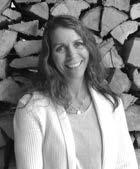





Last year, Vermonters threw away 71,113 tons of food scraps which ended up in our only landfill. Equal to 242 pounds of food scraps per person per year.
CSWD’s Organic Recycling Facility (ORF) and our six Drop-Off Centers accept food scraps from residents and businesses to keep them out of Vermont’s only landfill.











